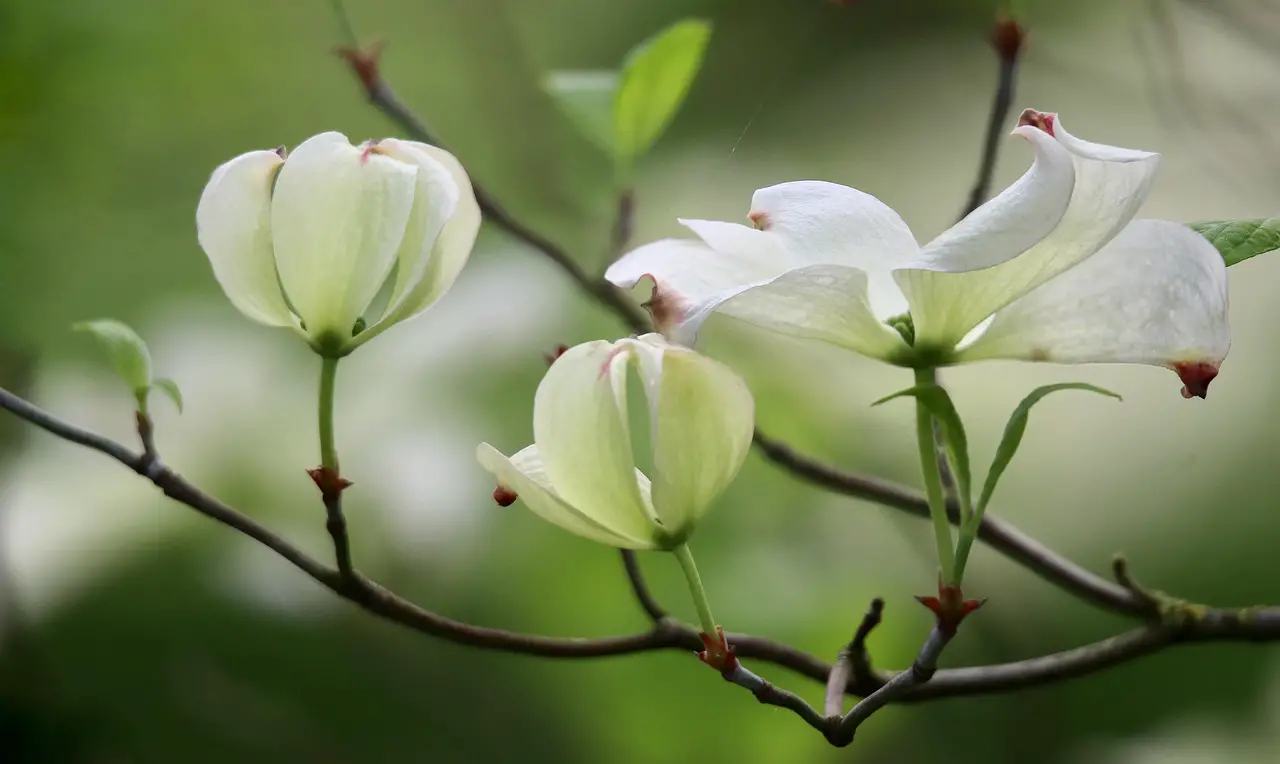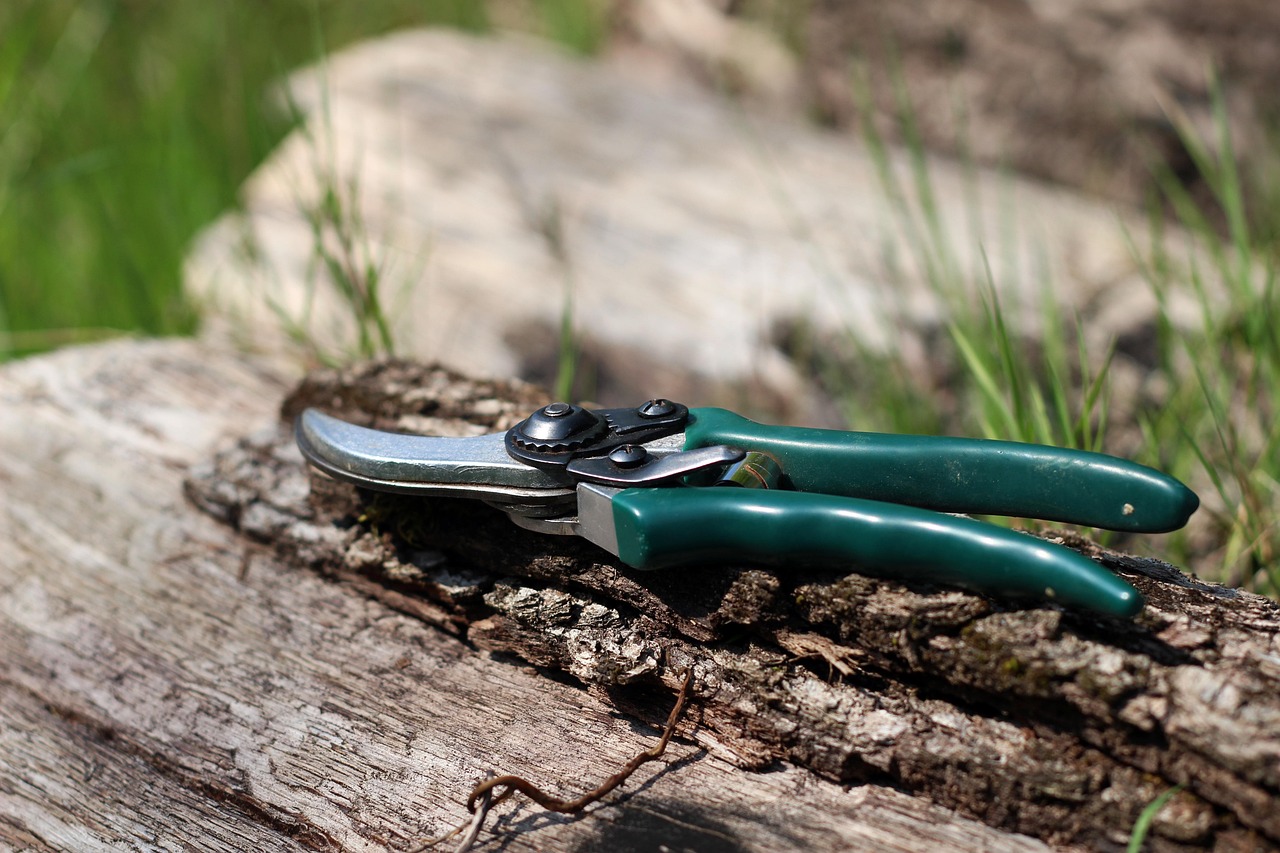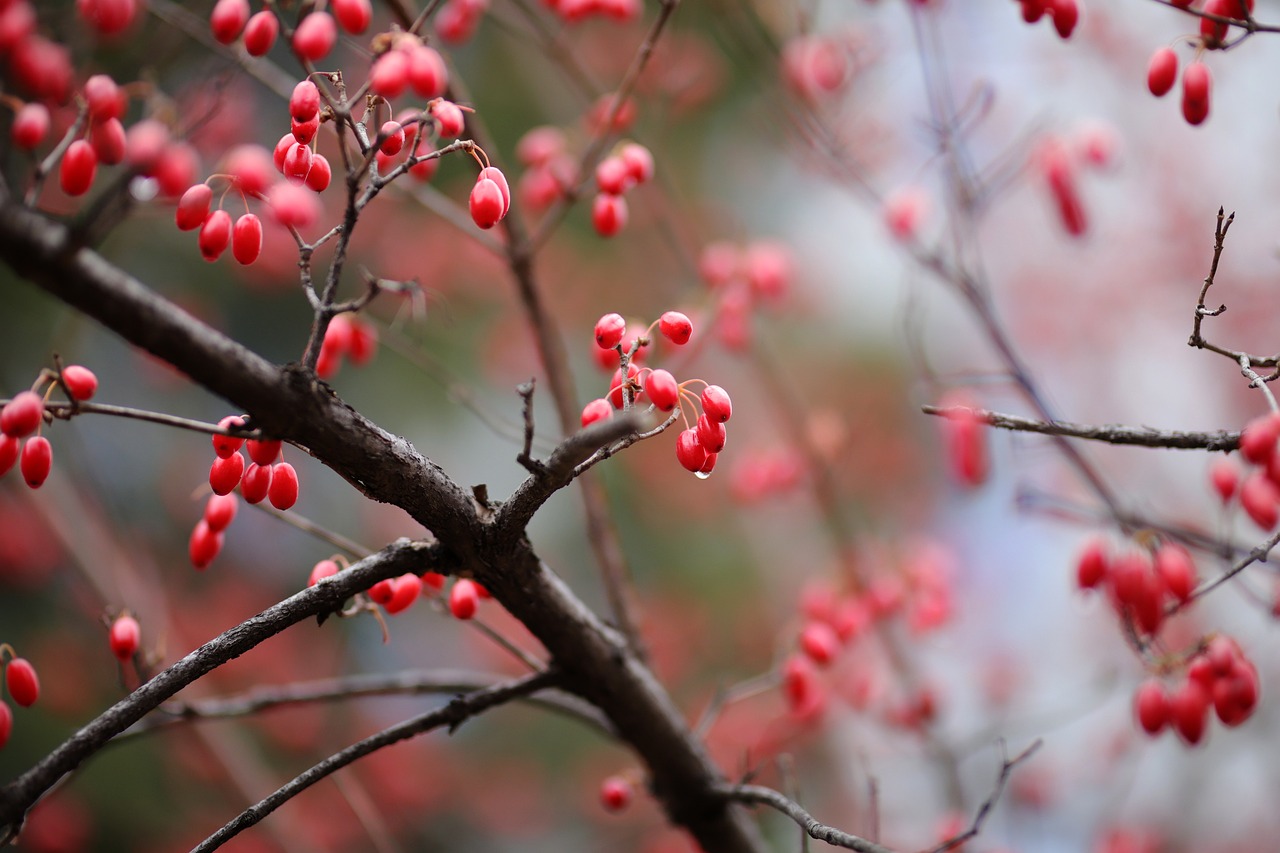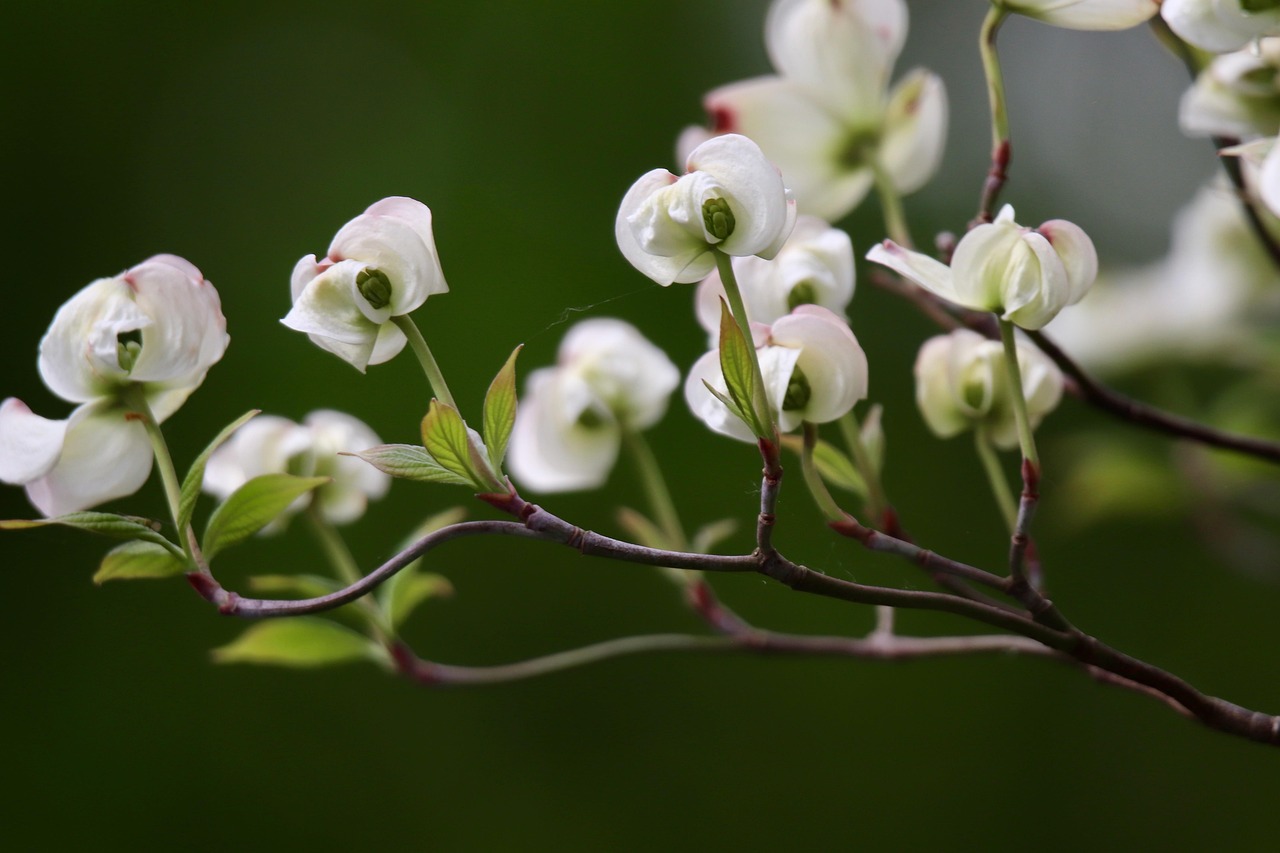Pruning flowering dogwood trees is essential for maintaining their health and promoting spectacular spring blooms. Proper timing and techniques can enhance flower production, improve air circulation, and prevent disease.
The flowering dogwood tree, known scientifically as Cornus florida, is celebrated for its stunning spring flowers and vibrant fall foliage. These trees are a popular choice in gardens and landscapes across the United States due to their beauty and relatively manageable size. However, like all trees, they require proper care, particularly when it comes to pruning.

Pruning is not just about cutting branches; it is a vital maintenance task that can significantly impact the tree’s blooming potential. When done correctly, pruning encourages new growth, shapes the tree, and removes any dead or diseased wood. This section will explore the importance of pruning flowering dogwood trees, the best times to prune, and the techniques that should be employed.
Importance of Pruning Flowering Dogwood Trees
Pruning flowering dogwood trees serves several important purposes:
- Health Improvement: Removing dead or diseased branches helps prevent the spread of diseases and pests.
- Enhanced Blooming: Pruning can stimulate new growth, resulting in more vibrant and abundant flowers in the spring.
- Shape Maintenance: Regular pruning keeps the tree well-shaped and manageable in size, making it an attractive addition to any landscape.
- Air Circulation: Improved airflow through the canopy reduces humidity around the leaves and flowers, helping to deter fungal diseases.
Understanding the right time to prune flowering dogwood trees is crucial. Pruning at the wrong time can lead to reduced blooms or even damage to the tree. The optimal time for pruning is late winter to early spring before new growth begins. This timing allows the tree to heal before it enters its active growing season.

Best Times to Prune
The timing of pruning can vary based on regional climate conditions. Here is a general guideline for different pruning times:
| Region | Best Pruning Time |
|---|---|
| Northern U.S. | Late March to Early April |
| Southern U.S. | February to Early March |
| Western U.S. | Late Winter to Early Spring |
In addition to seasonal timing, it’s essential to consider weather conditions when planning your pruning session. Avoid pruning during wet weather or when frost is expected, as this can stress the tree and create an environment conducive to disease.
Techniques for Pruning Flowering Dogwood Trees
There are specific techniques that should be employed when pruning flowering dogwood trees to ensure health and productivity:

- Assess the Tree: Before starting, take a moment to evaluate the overall health of the tree. Look for any signs of disease or damage that need immediate attention.
- Remove Dead or Diseased Wood: Start by cutting away any dead or diseased branches. This helps prevent potential problems from spreading throughout the tree.
- Thin Out Crowded Areas: If branches are crossing or overcrowded, thin them out to improve light penetration and air circulation.
- Shape the Canopy: Maintain an attractive shape by selectively trimming branches that disrupt the tree’s natural form. Aim for a balanced shape that allows for good airflow.
- Avoid Topping: Never top a dogwood tree. Topping results in weak growth and makes the tree susceptible to disease.
Using sharp, clean tools is essential for making precise cuts. Disinfecting tools before use can prevent the spread of disease between plants. Make clean cuts at a 45-degree angle, about a quarter-inch above a bud or lateral branch. This technique promotes quick healing and encourages healthy new growth.
By following these guidelines for timing and techniques, you can ensure that your flowering dogwood tree remains healthy and produces stunning blooms each spring. Proper care through pruning not only enhances the beauty of your garden but also contributes to the longevity of this cherished tree species.
Common Mistakes to Avoid When Pruning
While pruning flowering dogwood trees can significantly enhance their health and blooming potential, there are common mistakes that many gardeners make. Being aware of these pitfalls can help ensure that you do not inadvertently harm your tree. Here are some key mistakes to avoid:

- Pruning at the Wrong Time: Timing is critical. Pruning too late in the season can remove buds that would have turned into flowers. Always prune in late winter or early spring.
- Over-Pruning: Removing too much foliage can stress the tree and reduce its blooming capacity. Aim for moderate pruning to maintain a healthy balance.
- Ignoring Tree Structure: Cutting branches without considering the overall structure can lead to a mis-shaped tree. Always step back and assess the tree’s shape while pruning.
- Using Dull Tools: Dull tools can crush branches instead of making clean cuts. Always use sharp, clean pruning shears for optimal results.
- Leaving Stubs: Leaving short stubs after cutting can invite disease. Always cut back to a healthy bud or lateral branch.
Tools Required for Pruning Flowering Dogwood Trees
Having the right tools is essential for successful pruning. Below is a list of tools that will make the task easier and more efficient:
- Bypass Pruners: Ideal for cutting small branches up to ¾ inch in diameter. They create clean cuts.
- Loppers: Suitable for larger branches (between ¾ inch and 2 inches). Their long handles provide leverage.
- Saw: A hand saw or pole saw is needed for branches thicker than 2 inches.
- Gloves: Protect your hands from thorns and rough bark.
- Disinfectant: Use rubbing alcohol or a bleach solution to clean tools before and after use to prevent disease spread.
Understanding Flowering Dogwood Tree Growth Patterns
To effectively prune flowering dogwood trees, it is crucial to understand their growth patterns. Flowering dogwoods have a unique growth habit that influences when and how you should prune.
The tree typically grows in a layered fashion, with horizontal branching patterns. This creates a tiered appearance that can be quite beautiful when maintained properly. However, this growth habit also means that certain areas of the tree can become crowded, leading to poor air circulation and reduced flower production.
Growth Stages
Flowering dogwood trees undergo several growth stages throughout their life cycle. Understanding these stages can help you determine the best approach to pruning:
| Growth Stage | Description | Pruning Recommendations |
|---|---|---|
| Young Tree | 0-3 years old; establishing roots and structure. | Focus on shaping and removing any damaged branches. |
| Mature Tree | 3-10 years old; full bloom potential is reached. | Thin out crowded areas and remove dead wood. |
| Established Tree | 10+ years old; may begin to decline in vigor. | Regular maintenance pruning is essential to promote new growth. |
Signs That Your Dogwood Tree Needs Pruning
Recognizing when your flowering dogwood tree needs pruning is essential for maintaining its health and appearance. Here are some signs to look for:
- Dead or Dying Branches: Dark, brittle branches indicate that they are no longer healthy and should be removed.
- Crowded Canopy: If branches are crossing or tightly packed, it’s time to thin out the canopy for better airflow.
- Pest Infestation: Signs of pests, such as holes in leaves or webbing, may necessitate pruning affected areas.
- Disease Symptoms: Discoloration or wilting leaves may indicate disease, requiring the removal of affected branches.
Observing these signs will allow you to address issues early, promoting a healthier tree that produces more vibrant blooms in the spring. Regular monitoring and timely pruning can significantly enhance the appearance and longevity of your flowering dogwood tree.
Avoiding Common Diseases in Flowering Dogwood Trees
Flowering dogwood trees can be susceptible to various diseases, which can impact their health and blooming potential. Understanding how to prevent these diseases is crucial for successful tree care. Here are some common diseases and their management strategies:
- Cornus Blight: Caused by a bacterial infection, this disease leads to leaf spots and dieback. To prevent it, maintain good air circulation and prune affected areas promptly.
- Canker Diseases: These are fungal infections that create lesions on branches. Regular pruning of dead or infected wood can help manage this problem.
- Powdery Mildew: This fungal disease appears as a white powdery substance on leaves. Ensure adequate sunlight and airflow, and consider using fungicides if necessary.
By being proactive in disease prevention, you can ensure that your flowering dogwood tree remains vibrant and healthy, ready to showcase its beautiful blooms each spring.
Seasonal Care for Flowering Dogwood Trees
In addition to pruning, seasonal care plays a crucial role in maintaining the health and beauty of flowering dogwood trees. Each season brings specific tasks that can enhance the tree’s growth and blooming potential. Here’s a breakdown of what you should focus on throughout the year.
Spring Care
As spring arrives, the flowering dogwood tree is preparing to bloom. Here are essential care tasks for this season:
- Inspect for Damage: After winter, check for any broken or damaged branches that may need pruning.
- Fertilization: Apply a balanced fertilizer to support new growth. A slow-release formula is ideal.
- Watering: Ensure the tree receives adequate moisture, especially during dry spells. Deep watering helps establish strong roots.
Summer Maintenance
During the summer months, focus on monitoring the health of your tree and managing its environment:
- Pest Monitoring: Regularly check for signs of pests such as aphids or borers. Early detection is key to effective management.
- Mulching: Apply a layer of mulch around the base of the tree to retain moisture and suppress weeds.
- Water Management: Maintain consistent watering, particularly if rainfall is scarce. Aim for deep watering once a week.
Fall Preparation
As leaves begin to change color and fall, it’s time to prepare your flowering dogwood for the winter:
- Pruning: Perform light pruning if necessary, focusing on removing any dead or diseased branches.
- Pest Control: Address any remaining pest issues before winter sets in. This can help prevent problems in the spring.
- Soil Testing: Consider testing the soil for nutrient levels and pH. This will help inform your fertilization strategy for spring.
Winter Care
During the winter months, the tree enters a period of dormancy. However, certain care practices are still important:
- Protection from Snow and Ice: If heavy snow accumulates on branches, gently remove it to prevent breakage.
- Check for Wildlife Damage: Winter can bring hungry animals. Protect young trees with guards if deer or rabbits are common in your area.
- Tool Maintenance: Winter is an excellent time to clean and sharpen your pruning tools, preparing them for the upcoming spring season.
Choosing the Right Location for Your Dogwood Tree
The location where you plant your flowering dogwood tree significantly impacts its growth and flowering capacity. Here are key considerations when selecting a site:
- Sunlight Requirements: Flowering dogwoods thrive in partial shade but can tolerate full sun. However, too much direct sunlight can lead to leaf scorch.
- Soil Type: Well-draining soil is critical. Clay soils can hold too much water, leading to root rot. Amend heavy soils with organic matter to improve drainage.
- Space Considerations: Ensure enough space for the tree’s mature size. Flowering dogwoods can grow 15 to 30 feet tall and wide, so plan accordingly.
Troubleshooting Common Issues
Even with proper care, flowering dogwood trees can experience issues. Here are some common problems and solutions:
Poor Flower Production
If your dogwood tree is not blooming as expected, consider the following factors:
- Lack of Sunlight: Ensure your tree receives enough light; insufficient sunlight can hinder blooming.
- Nutrient Deficiency: Conduct a soil test. Low nutrient levels may necessitate fertilization.
- Improper Pruning: Over-pruning or pruning at the wrong time can remove flower buds. Review your pruning practices.
Leaf Discoloration
If you notice yellowing or browning leaves, this may indicate various issues:
- Nutrient Deficiency: Yellow leaves may suggest a lack of nitrogen or other essential nutrients.
- Pest Infestation: Check for pests such as aphids or spider mites that could be causing stress to the leaves.
- Disease Symptoms: Leaf spots or wilting may indicate disease presence. Promptly prune affected areas and consult a local extension service if necessary.
Branch Dieback
If branches are dying back, it could be due to environmental stress or disease:
- Water Stress: Ensure consistent watering practices. Both over-watering and under-watering can lead to dieback.
- Canker Diseases: Prune away any dead or diseased wood, and monitor for further symptoms.
- Pests: Investigate possible infestations that could be harming the branches.
Addressing these common issues promptly will help maintain your flowering dogwood’s health, ensuring it continues to flourish and provide beautiful blooms each spring.
Long-Term Care and Maintenance
Maintaining a flowering dogwood tree involves long-term care strategies that extend beyond pruning and seasonal tasks. Consistent attention to the tree’s environment and health is crucial for ensuring it remains vibrant and continues to produce spectacular blooms year after year.
Soil Management
The quality of the soil plays a significant role in the health of your flowering dogwood tree. Here are some tips for effective soil management:
- Regular Testing: Conduct soil tests every few years to assess nutrient levels and pH. Adjustments may be needed based on the results.
- Organic Matter Addition: Incorporate organic materials, such as compost or well-rotted manure, to improve soil structure and fertility.
- Avoid Compaction: Limit foot traffic around the base of the tree. Soil compaction can impede root growth and water absorption.
Watering Practices
Proper watering is essential, especially during dry spells or heat waves. Here’s how to manage watering effectively:
- Deep Watering: Water thoroughly but infrequently. Deep watering encourages roots to grow deeper into the soil.
- Mulch Application: Use mulch around the base of the tree to retain moisture and regulate soil temperature.
- Monitor Rainfall: Adjust your watering schedule based on rainfall amounts. Too much or too little water can stress the tree.
Fertilization Strategy
Fertilizing your flowering dogwood tree can enhance its growth and flowering potential. Consider the following:
- Balanced Fertilizers: Use a balanced fertilizer with equal parts nitrogen, phosphorus, and potassium to support overall health.
- Timing of Application: Fertilize in early spring before new growth begins. This will provide the necessary nutrients as the tree awakens from dormancy.
- Avoid Over-Fertilization: Too much fertilizer can cause excessive leaf growth at the expense of flowers. Follow package instructions carefully.
Pest and Disease Management in Detail
Beyond initial signs of pests and diseases, long-term management can further protect your flowering dogwood tree. Here are detailed strategies:
Pest Control Strategies
A proactive approach to pest management can prevent infestations from becoming severe. Here are some methods:
- Regular Inspections: Conduct regular checks for pests, especially during spring and summer when they are most active.
- Natural Predators: Encourage beneficial insects, such as ladybugs and lacewings, which feed on harmful pests.
- Insecticidal Soaps: If pests are detected, consider using insecticidal soaps or neem oil as a safe treatment for controlling infestations.
Disease Prevention Techniques
Preventing disease is often easier than treating it. Here are steps you can take:
- Avoid Overhead Watering: Watering at the base of the tree reduces humidity around leaves, lowering the risk of fungal infections.
- Sanitation Practices: Clean up fallen leaves and debris around the tree to minimize disease spread.
- Resistant Varieties: When planting new dogwoods, consider choosing disease-resistant varieties if available.
Final Thoughts
Caring for a flowering dogwood tree requires dedication and knowledge. By understanding proper pruning techniques, seasonal maintenance, and ongoing care strategies, you can ensure that your tree remains healthy and produces breathtaking blooms each spring.
Regular monitoring for pests and diseases, along with proper fertilization and watering practices, can contribute significantly to your tree’s longevity. With the right care, your flowering dogwood can become a centerpiece in your landscape, providing beauty and enjoyment for many years to come.
In conclusion, investing time and effort into the care of your flowering dogwood tree will reward you with stunning displays of flowers each spring. Whether you’re a seasoned gardener or a novice, the joy of nurturing this beautiful tree is truly fulfilling.
